FORCE
-
A push or a pull acting on a body is called force..
-
Living and non- living things can apply force.
-
To apply a force on an object interaction between object and source of
force is necessary.
Examples: To kick ball we need to push it, to pick the book we need to
pull it, and to lift the box we need to push it.

EXPLORING FORCES
-
The measurement of strength and amount of force is called magnitude of force.
-
Two or more forces on the same object can be applied in the same
direction and opposite direction.
1. When forces are applied on an object in the same direction-
When two or more forces are applied in the same direction, then the net
force is the addition of magnitude of both the forces.
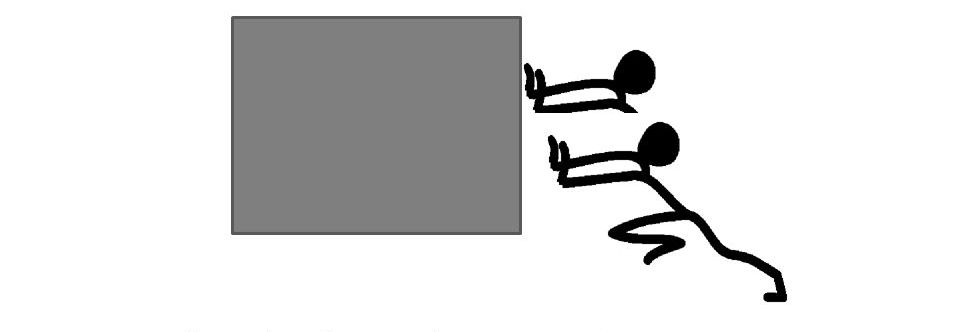
Example-
When two persons push the box in the same direction with the magnitude of forces of each 5N, then resultant force will be-
Net force- 5N + 5N= 10N (In the direction of applied force).
2.
When two forces are applied on an object in the opposite direction-
When two or more forces are applied over an object in the opposite
directions, the net force is the difference of magnitude of two forces.
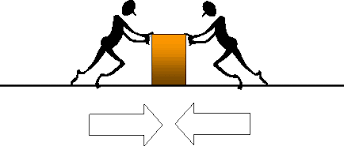
Example- When two persons push the box in the opposite direction with the magnitude of forces of each 4 N, then resultant force will be-
Net force: 4N - 4N= 0N (Box will not move)
EFFECT OF FORCES
1.
Force can change the state of motion:
An Object can be in two states.
-
Rest:
When an object is not moving i.e. a stationary object is called in the
state of rest. For example - A ball or books kept on the table and not
moving.
-
Motion:
A moving object is called in the state of motion. For example - a
moving car, a moving bus, etc.
-
A Force can move a stationary object. A force can speed up, decrease the
speed and change the direction of a moving object. Force can stop a moving
object. Finally we can say that force can change the state of motion
2.
Force can change the shape of an object
Example:

-
Above examples show how use of force in different ways can change the shape of the object.
-
So we can say that forces can change the shape of an object.
TYPES OF FORCE
(1)
CONTACT FORCE
-
Force that comes into action after the interaction between objects is
called contact force.
-
Contact force works on the point of contact.
-
Example - pushing a car, hitting the ball, kicking a ball, etc.
Muscular force, friction force are types of contact force.
(a)
Muscular force
-
Force due to the action of muscles is called muscular force.
-
Force resulting because of action of muscle is called muscular force.
Examples - pushing the object like school bag or lift the dumbles for exercising, we use the muscular force.
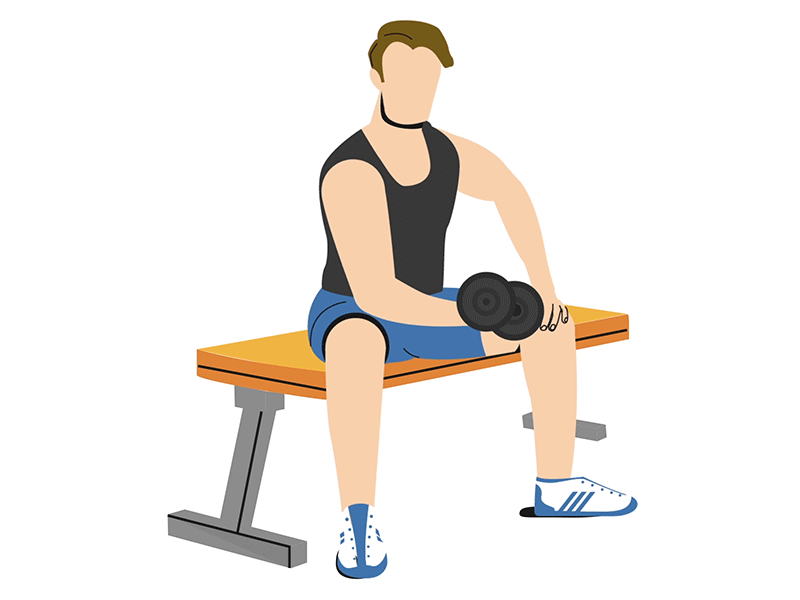
(b)
Friction Force:
-
Forces of friction arise between the surfaces of two objects.
-
Always acts on all moving object and its direction is always opposite to the direction of motion.
-
Force of friction comes into action only after interaction between two objects, thus, it is a type of contact force.
Example: Due to force of friction between the surface of the ball and the
ground that brings the moving ball to rest.

(2)
NON- CONTACTING FORCES
Force due to without interaction between two objects is called
non-contact force. For example; a magnet can pull an iron nail from a
distance.
Magnetic force, Electrostatic force and Gravitational force are examples of
non-contact force.
(a)
Magnetic Force
-
A magnet can exert a force on another magnet without being in contact
with it.
-
The force exerted by a magnet is an example of a non-contact force.
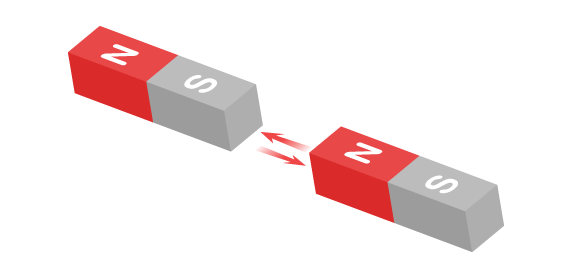
Example: Opposite pole of two magnets attract each other and same pole
repel each other.
(b)
Electrostatic Force
-
When a charged body exert a force on another charged or uncharged body is
called electrostatic force.
-
A positively charged body attracts a negatively charged body and repels a
positively charged body without coming in contact, thus it is a non-contact
force.
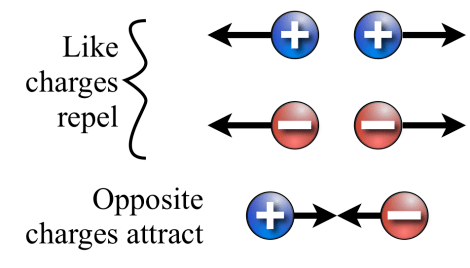
(c)
Gravitational Force:
-
This force is exerted by earth, moon, sun and other planets to others.
-
Since, earth attracts all objects even without coming in contact, thus
gravitational force is a non-contact force.
Example: When we release an object from a height, it falls over the
ground because of gravitational attraction of earth.

PRESSURE
The force acting per unit area of a surface is called pressure or we can
say force per unit area is called pressure.
Pressure = Force / Area
From this formula, we can say Pressure is indirectly proportional to the
area, thus *pressure decreases with increase in area and increases with
decrease in area.*
Example -
-
When we cut an apple, we need to use the sharp edge of the knife instead
of blunt knife because the sharp edge of knife has small surface area and
we need to exert less force with high pressure to cut the apple.
-
When we put a nail into a wooden board, the pointed end of the nail is
kept at the front. The pointed end of the nail has very small surface area
and this enables us to apply a greater pressure with the applied force.
PRESSURE EXERTED BY LIQUID AND GAS
-
Liquid and gas can also exert pressure on inner walls of the container in
which they are kept.
-
When air is filled, a rubber balloon gets inflated from all sides. This
happens due to air or gas exerts pressure over inner walls of the balloon.
-
Water starts leaking if there is a pore in the bottle. This happens due
to water exerts pressure over the walls of the bottle.
ATMOSPHERIC PRESSURE
-
Our atmosphere is made of different types of gases. Since gases exert
pressure, thus Pressure exerted by air (present in atmosphere) is called
atmospheric pressure.
-
The weight of air in a column of the height of the atmosphere and area 10
cm x 10 cm is as large as 1000 kg. The reason we are not crushed under this
weight is that the pressure inside our bodies is also equal to the
atmospheric pressure and cancels the pressure from outside.
-
A pressed rubber sucker on a plane surface does not come off because of